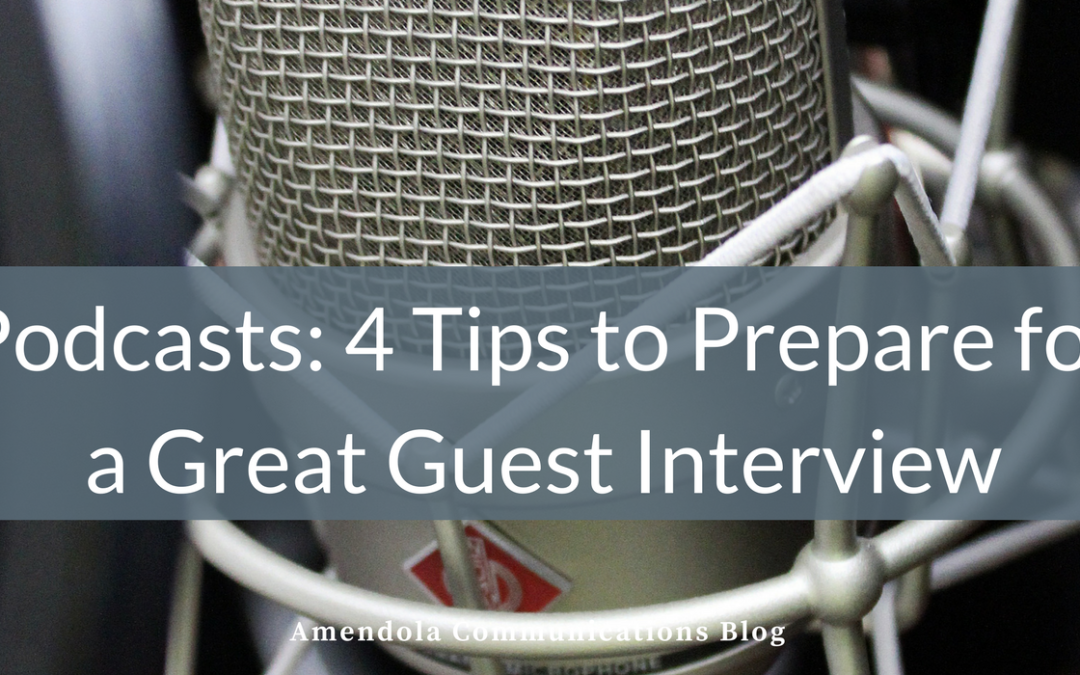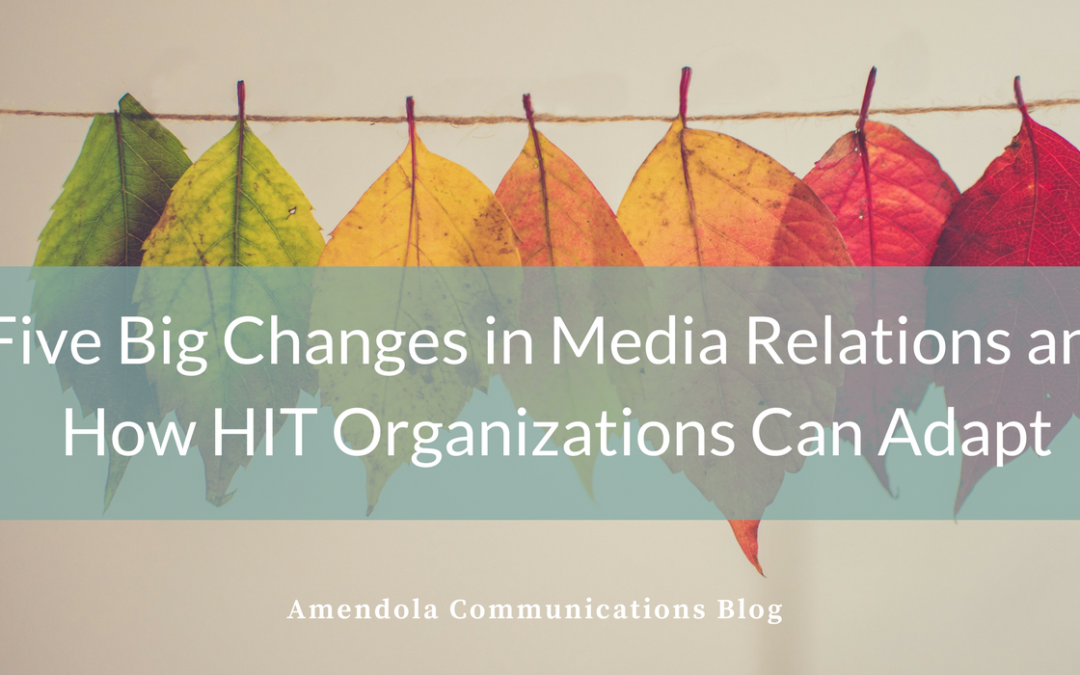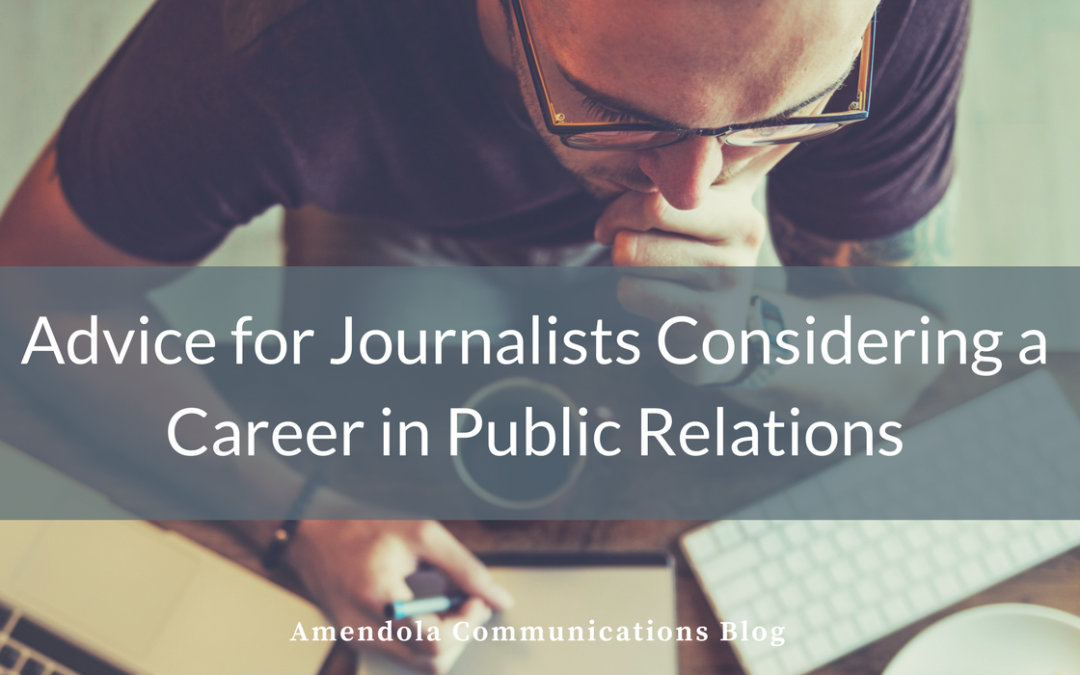
by Brandon Glenn | May 2, 2018 | Blog
Someday, you may be able to tell your grandchildren you lived through the golden age of podcasts.
From the humble beginnings of first being listed in iTunes in 2005 to the emergence of “Serial” as the medium’s first breakout star in 2014, podcasts have evolved from “the nichiest, wonkiest content platforms to a star-studded, self-contained media ecosystem with hundreds of millions of dollars in annual advertising revenue,” according to Wired.
Plenty of Americans have noticed. A report last year from Edison Research found that 112 million Americans had listened to a podcast, a jump of 11 percent from the prior year. Overall, 40 percent of Americans age 12 or older have listened to a podcast at some point, and the demographics don’t skew as youthful as you might think. For the first time, more Americans aged 25 to 55 were monthly podcast listeners than those aged 12 to 24, the report found.
Podcasting has, of course, made its way into healthcare, just as it has with other industries. Popular healthcare podcasts include TEDtalks Health, Harlow on Healthcare, Mayo Clinic Radio and Healthcare Tech Talk, just to name a few.
So there’s a fairly strong chance that you or an executive you work with will be asked to appear as a guest on a podcast if it hasn’t happened already. If and when that happens, following the tips below will help ensure a successful podcast, and hopefully a return invitation. (Many of these recommendations are applicable to media interviews, in general.)
- Research the podcast and host: In short, do your homework. Nothing says, “I have no clue why I’m doing this interview, but my public relations person told me I should, so here I am,” like an interview subject who doesn’t know the name of the media outlet (podcast) or reporter (podcast host) that he or she is speaking with. In such circumstances, trust me that the host is not blind to the apathy and indifference the subject is showing toward the podcast, and it will immediately start the interview in a negative place. Research the host’s background and listen to a few episodes. What topics does the show cover? Does it have an agenda, or is it fairly neutral? What is the background of other guests? In some cases, interviewers will use a standard opener (“Tell me about yourself and your company.”) and closer (“Anything else you want to mention?”). By identifying those routine questions ahead of time, it’s easy to be prepared to knock them out of the park.
- Hone your message: Really, there’s no reason not to knock virtually every question out of the park, as long as you’ve prepared a few talking points. Here’s where the research you did in the prior step comes into play. Once you’ve identified what the show is about and who the audience is, tailor your talking points to individuals in those professions. If it’s a podcast about a niche like electronic health records, for example, you can bet the audience is generally very knowledgeable on the topic, so feel free to get as far down into the weeds as you like. If it’s a general healthcare podcast that runs the gamut of the industry, keep the talking points more brief and high-level. Be sure to write out your talking points, keep them in front of you during your interview, and hammer these key themes multiple times, so listeners have no doubt about what you and your company are about.
- Think about sound quality: To state the obvious – podcasts are something people listen to, so sound quality is kind of important. If you’re being interviewed over the phone, use a landline. If the interview is via Skype or a similar application, be sure your internet connectivity is strong. In either case, using a good quality headset is definitely a plus. Find a quiet place with a closed door away from dogs, kids, coworkers or any other distractions. Finally, be sure to have a cup of water (or another favorite beverage) next to you at all times to avoid a scratchy, hoarse-sounding voice.
- Promote the interview: Before the interview, post messages on your social channels previewing it and sharing your excitement about appearing. Tag the host, who will notice it and appreciate it. After the interview do the same, thanking the host for an enjoyable and stimulating conversation. Post it on your website and include it in any relevant e-mail campaigns, too. You worked hard to prepare for the podcast, so be sure to get as much mileage out of the appearance as possible.
Podcasting is certainly enjoying a cultural moment, but the medium likely has more staying power than just a moment. Despite the surge in popularity noted in the statistics above, Edison’s report found that just 60 percent of Americans are “familiar” with the term podcasting.
That means podcasting holds strong growth potential as the other 40 percent of the nation begins to discover the medium in the coming years. When you or a colleague receive your first invitation, remember these tips to prepare for a successful podcast guest interview.

by Brandon Glenn | Dec 6, 2017 | Blog
A recent webinar sponsored by Cision explored several changes in media relations over the last few years and offered tips on steps healthcare IT (HIT) organizations should take to prosper in this new reality.
The webinar was led by Michael Smart, a PR pro who says he has trained more than 7,000 communicators in his career, and is based on a white paper he wrote. Smart notes that, in his own observations, he’s seen far too many organizations chase the “Holy Grail” of coverage in the New York Times or Wall Street Journal to the detriment of smaller, lesser-known publications that in some cases could deliver even more value to clients.
Refreshingly, Smart also offered among the sharpest denunciations I’ve come across of the corporate scourge known as multi-tasking, stating, “I hate multitasking. It’s this thing we were all excited about 10 years ago until we realized it’s awful, much like kale. I seriously think it destroys potential and it’s killing a lot of PR pros, and so I’m on a mission to defeat it.”
Amen, though I will admit to enjoying kale in the proper context. To Smart’s comments, I’d like to add my own sarcastic slogan for multitasking, to be emblazoned across inspirational posters hung above the busy cubicles of America: “Multitasking: Why do one thing well when you can simultaneously do 10 things poorly?”
While many of the changes in media relations that Smart describes will be familiar to PR veterans, a refresher never hurts. In that spirit, I attended the hour-long webinar and condensed the five key points down into this quick, bite-sized summary.
- Expand your definition of the “media” in “media relations” to include any third-party trusted by your audiences: In other words, explore nontraditional outlets that may be easier to work with and have similar reach and credibility to the old guard. This can include well-known and widely read sites like Vox that have only been around for a few years, or even corporate blogs. The key is simply whether the site has earned your desired audience’s trust. How do you know which of these sites are worth pursuing? Start by using SimilarWeb to research site traffic and use Moz to examine domain authority.
- Journalists incentives have changed. They must increasingly focus on web traffic: Again, no shocker here for anyone who’s been paying attention. But this new reality opens up new possibilities for HIT organizations. Smart suggests that journalists will be more receptive to your pitches if you can show you’ll be able to distribute their content to a wider audience yourself, ideally by leveraging a social account with a lot of followers or an email newsletter, for example.
- Get noticed before you pitch: All experienced marketers know that journalists will be more receptive to their pitches if they’ve been able to previously establish solid working relationships with those journalists. But Smart offers good advice for establishing those relationships, which are especially important given that there are four PR pros for every professional journalist in the U.S. and U.K., according to statistics he cited during the webinar. He suggests developing a key list of 10 influencers, and then devoting 10 minutes per day to reading content they’ve produced, and when appropriate, reacting to the content with a compliment or a few kind words. He touts this as a simple daily task to “dramatically” increase your response rate. A private Twitter list is a great way to keep up-to-date with content from your top influencers.
- Faux customization often fails: Specific and sincere customization can help you stand out. Smart warns to avoid beginning pitches with broad, non-personalized statements. As supporting evidence for journalists frustration with this approach, Smart cites data from Cision’s 2017 State of the Media Report. When asked to improve the situation, journalists two most frequently cited pieces of advice were, first, to research and understand the media outlets they’re pitching, and second, to tailor their pitches to suit those outlets.
- Journalists don’t have time to do the legwork anymore: Reporters are always on deadline. They don’t have as much time as they once did to research sources or story ideas and they have an “insatiable need for visuals,” which can often be hard to acquire, according to Smart. The big change here is how much of this unglamorous legwork journalists will let HIT organizations do for them once they’ve proven to be trustworthy and credible, Smart says.
No doubt the practice of media relations will continue to change just as quickly as the media ecosystem itself does. But HIT organizations looking to keep pace with this evolution would do well to try implementing some of Smart’s advice. Smarter, more targeted pitching could help free us of our quality-killing, attention-sapping multitasking obsession.

by Brandon Glenn | Sep 13, 2017 | Blog
Admit it, reporters and editors: Many of you are a little curious to learn about tips for journalists considering a career in public relations, or at least you have been at some point.
That’s OK. No one could blame you and you’ve got plenty of reasons:
- Newspapers have hemorrhaged so many jobs over the last 10 years that a major industry trade group threw in the towel on tracking job losses.
- Before you say, “Everyone knows newspapers have been bleeding jobs, but that’s been offset by growth at digital publishers,” consider one factor: That statement isn’t true. Hiring at digital media outlets “pales in comparison to the number of journalists laid off in the newspaper industry,” according to Columbia Journalism Review.
- The occupation “desktop publisher” (sounds a lot like a journalist to me) appears on the U.S. Bureau of Labor Statistics list of fastest-declining occupations between 2014 and 2024, along with telephone operators, mail carriers, sewing machine operators and a lot of other occupations that aren’t very appealing to young people.
- Most disturbing, perhaps, is the absolute dominance of Facebook and Google in the advertising market. Between 2012 and 2016, the two giants alone accounted for 70 percent of the growth of ALL advertising revenues, a figure which is inclusive of radio and TV ads. If we focus only on the U.S. digital advertising, the numbers are even more bleak: Last year, Google and Facebook accounted for an “astounding” 99 percent of the growth in that market last year.
- Further, with Facebook and Google controlling 65 percent of new digital ad revenues, don’t expect a big surge in hiring from other digital publishers any time soon.
No doubt, it’s hard out there for a journalist. So, naturally, you may be thinking about transitioning to a new career that builds on many of the skills you’ve developed as a reporter and editor writing, interviewing, editing, researching and the like. Lots of us have been there.
I spent nearly a decade in journalism, and worked in corporate communications and public relations for about the last four years. As someone who has seen how the sausage is made on both sides of the industry, I offer the following thoughts, observations and tips for journalists who are interested in a career in public relations.
Continue to think like a journalist: That’s not to say that after starting in PR you need to think exactly like you did as a journalist. Once you acquire more PR experience you’ll have an advantage over others in the field: You’ll have the ability to think both as a journalist and PR professional. Your guidance on what does or does not capture media interest will serve you very well with clients, who typically have a wealth of knowledge and experience in their own industry and are anxious to learn how journalists work.
Become more client-focused: Journalist are a bit like a lone wolf: Largely self-reliant and able to chart their own course to find the nourishment they need to survive. For journalists that nourishment comes in the form of stories that will attract readers and clicks (“publish or perish,” after all). Corporate culture is a bit of change from that, and in many cases, the change is positive. You’ll actually get to work as part of a team rather than primarily writing articles by yourself although that cooperation with and reliance on others may take some getting used to at first.
Another difference is the number of approvers. In journalism, it’s essentially you and your editor. In PR, there is your internal team, and there is the client team, which often includes members of the marketing department as well as individual subject matter experts. Everyone in the process brings their own perspective, which may not always align with what you may have been taught in journalism school. That’s ok, though. It helps you expand your universe and the ways you can communicate.
Stress out less about deadlines: No matter the profession they’re in, everyone seems to think that they’re faced with constant deadline pressures and always rushing to get to the next task, whatever that task may be. However, in my own experience from working in journalism and with corporations, corporate deadlines are usually longer than “today” (unlike journalism), and are more likely to get pushed back when needed. Why might this be? I suspect it comes down to organizational focus. A media outlet or publishing company is in the business of publishing news. Articles are the “widgets” that these companies produce to pull in revenues from advertisers.
For corporations that are clients of PR firms, publishing content is not their primary focus. The content is part of a larger plan with many moving parts. In other words, content isn’t the “widget;” it’s support for the widget, which means content deadlines are dependent on when the widget is ready. Further, corporations typically have more layers of approval that any given piece of content must pass through before seeing the light of day.
Get used to being the pursuer, instead of the one being pursued: As a journalist, PR professionals are constantly vying for your attention, all looking to obtain media coverage for their clients. It’s ok to confess that that felt good sometimes. Well, forget about that feeling. In PR, the tables have turned and you may be expected at times to pursue inexperienced journalists from small media outlets who nonetheless aren’t particularly interested in what you have to say at the moment. If your ego can’t handle that (not to mention lots of your pitches being met with rejection or indifference) PR probably isn’t the best field for you.
Maintain your journalism contacts: Attending a conference or other gathering with a number of fellow journalists? Grab some business cards not only from potential sources you’ll be writing about, but from other reporters, too. Those journalist contacts you make will serve you very well in public relations, and because they’ve seen you as one of themselves, they may respect you a bit more when you’re pitching or sharing story ideas.
Confession time – this is one area where I fell short as a reporter. When I attended conferences, I was so preoccupied with building my network of sources and finding stories that I neglected to interact as much as I should have with journalists – aside from the times we spent together sitting in the press area. So take a step back from your articles, interviews and research and spend some time getting to know the reporters you’re working shoulder-to-shoulder with. If and when you join a PR firm, you’ll be glad you did because you’ll have a pre-built, solid network of journalist contacts the first day you walk in the door. And that’s invaluable to the clients who are depending on you to get their stories told.
These are just one ex-reporter’s tips for journalists considering a career in public relations. There are many paths to PR, and journalism is but one. Regardless of how you come to PR and how you obtain the necessary skills, the abilities that journalism cultivates – writing, interviewing, editing, researching will play a critical role in your success.


